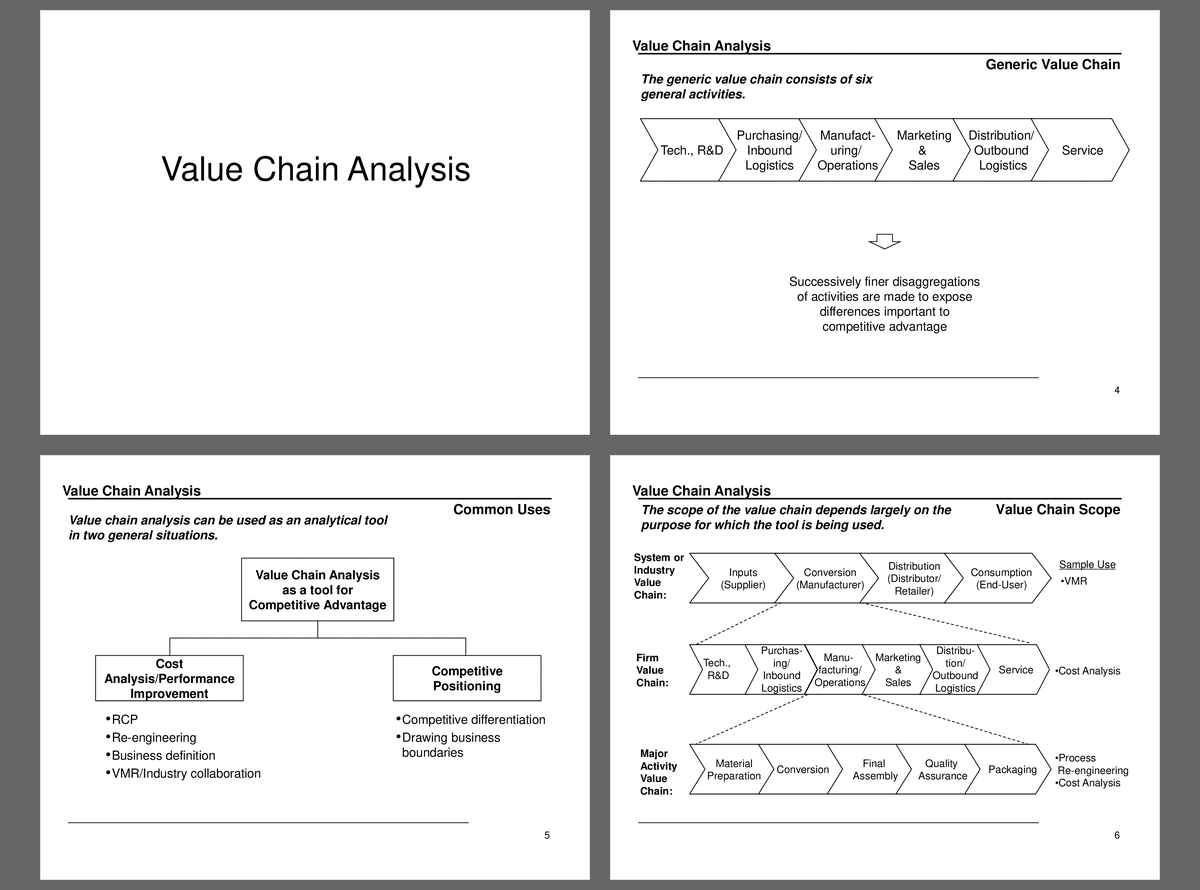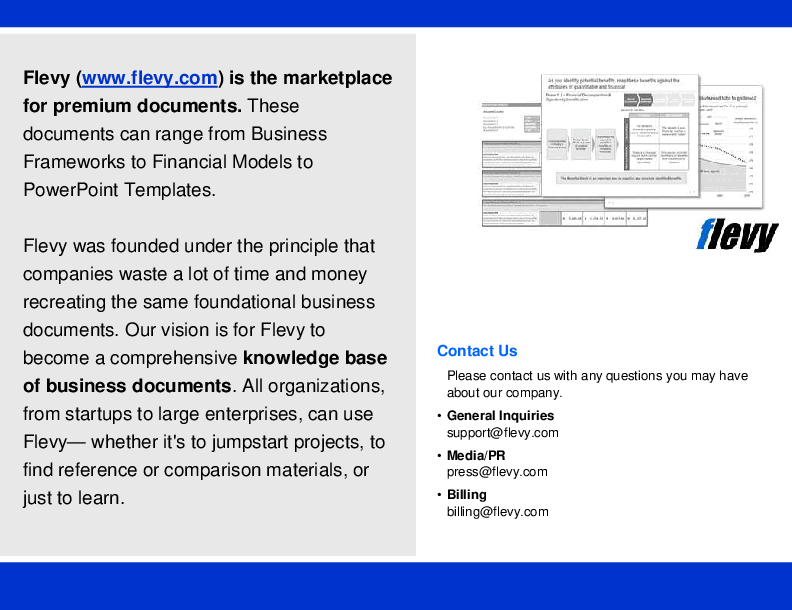Value Chain Analysis (PowerPoint PPT Slide Deck)
PowerPoint (PPT) 25 Slides
COMPETITIVE ADVANTAGE PPT DESCRIPTION
This presentation introduces a systematic method to conduct a value chain analysis. Value chain analysis is a systematic method for dis-aggregating a firm or industry into its major discrete activities to understand sources of competitive advantage. Value chain analysis can be used to identify opportunities to gain cost advantage/improve performance and increase competitive differentiation.
This document delves into the practical applications of value chain analysis, providing a clear framework for identifying and mapping major and sub-activities within your organization. By breaking down complex processes into manageable components, you can pinpoint inefficiencies and uncover opportunities for improvement. This is particularly useful for cost analysis, process re-engineering, and competitive positioning.
The methodology section guides you through the critical steps of determining which activities to map and how to group them based on different economics, processes, and customer perceptions. This structured approach ensures that you focus on the most impactful areas, driving significant improvements in performance and cost efficiency. The document also includes a competitive positioning case, illustrating how to evaluate customer importance across various criteria like product innovation, reliability, and speed of delivery.
In addition, the document presents a real-world example involving Ace Consumer Products, a company facing financial challenges in the U.S. ketchup market. This case study highlights the complications of interlinked business operations and explores potential cost reduction strategies to restore profitability. The insights gained from this example can be directly applied to similar situations in your own organization.
The document emphasizes the importance of benchmarking in understanding where the largest opportunities for cost savings lie. By comparing your operations against industry standards, you can identify areas for consolidation and achieve substantial savings. For instance, consolidating from six plants to four could save $3.9 million annually, demonstrating the tangible benefits of a thorough value chain analysis.
Got a question about the product? Email us at support@flevy.com or ask the author directly by using the "Ask the Author a Question" form. If you cannot view the preview above this document description, go here to view the large preview instead.
Source: Best Practices in Competitive Advantage, Value Chain Analysis PowerPoint Slides: Value Chain Analysis PowerPoint (PPT) Presentation Slide Deck, Documents & Files
COMPETITIVE ADVANTAGE PPT SLIDES
This document is available as part of the following discounted bundle(s):
Save %!
Essential Consulting Knowledge Builder
This bundle contains 21 total documents. See all the documents to the right.









